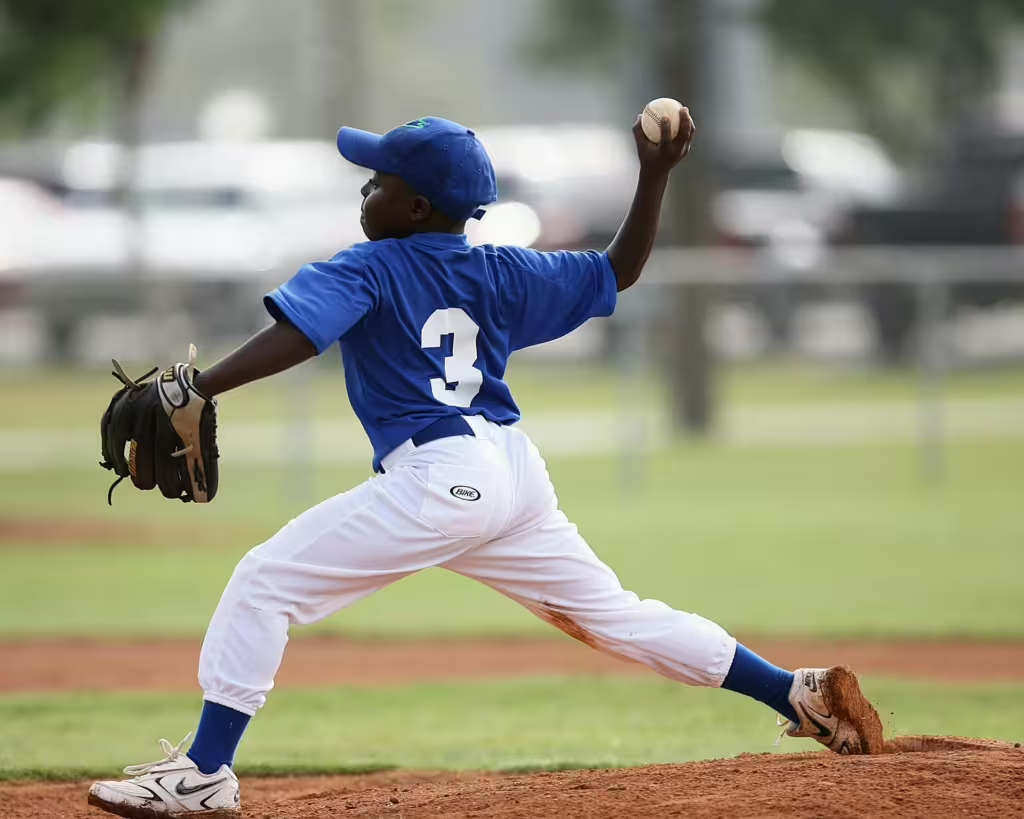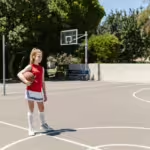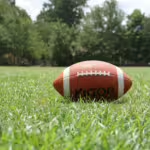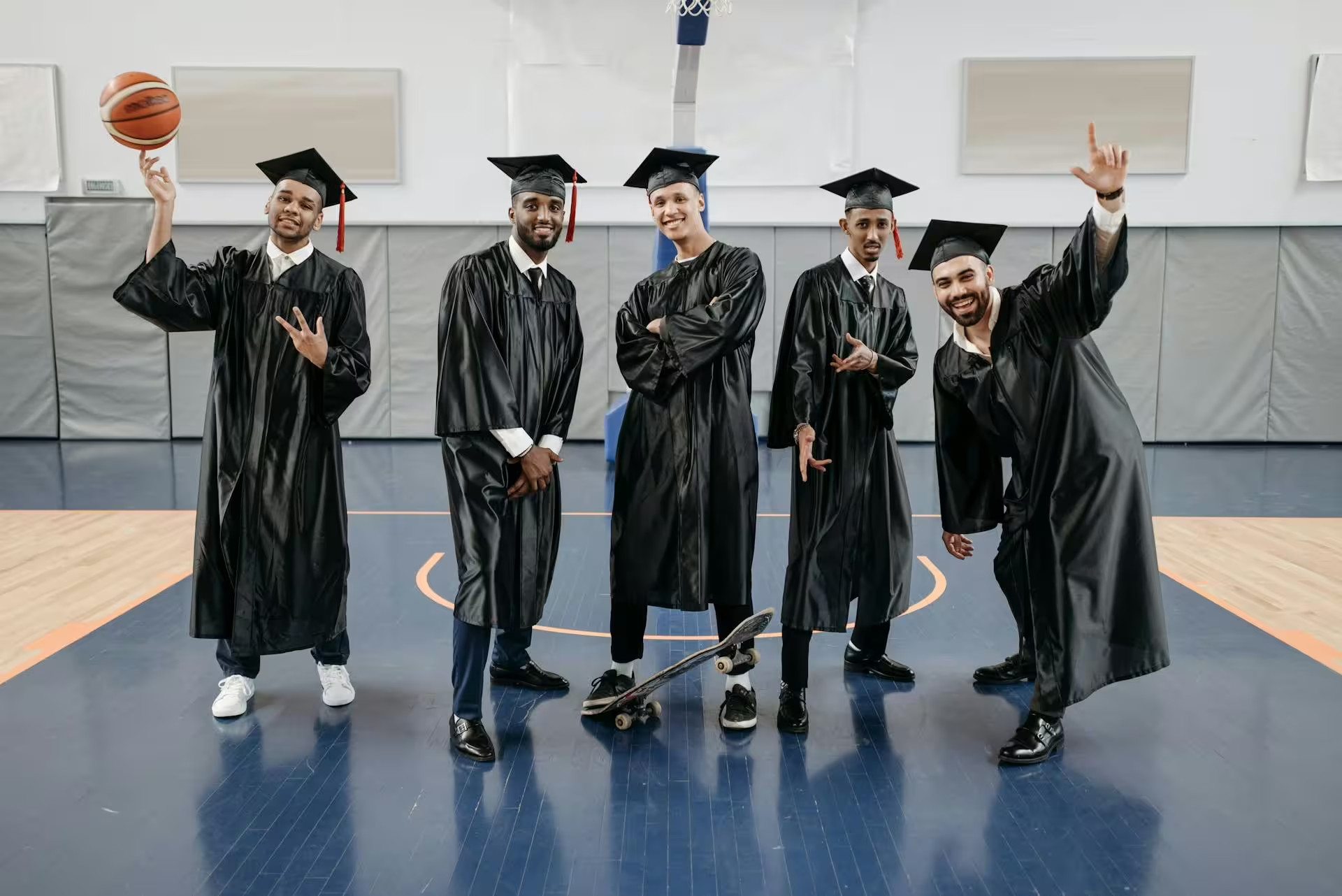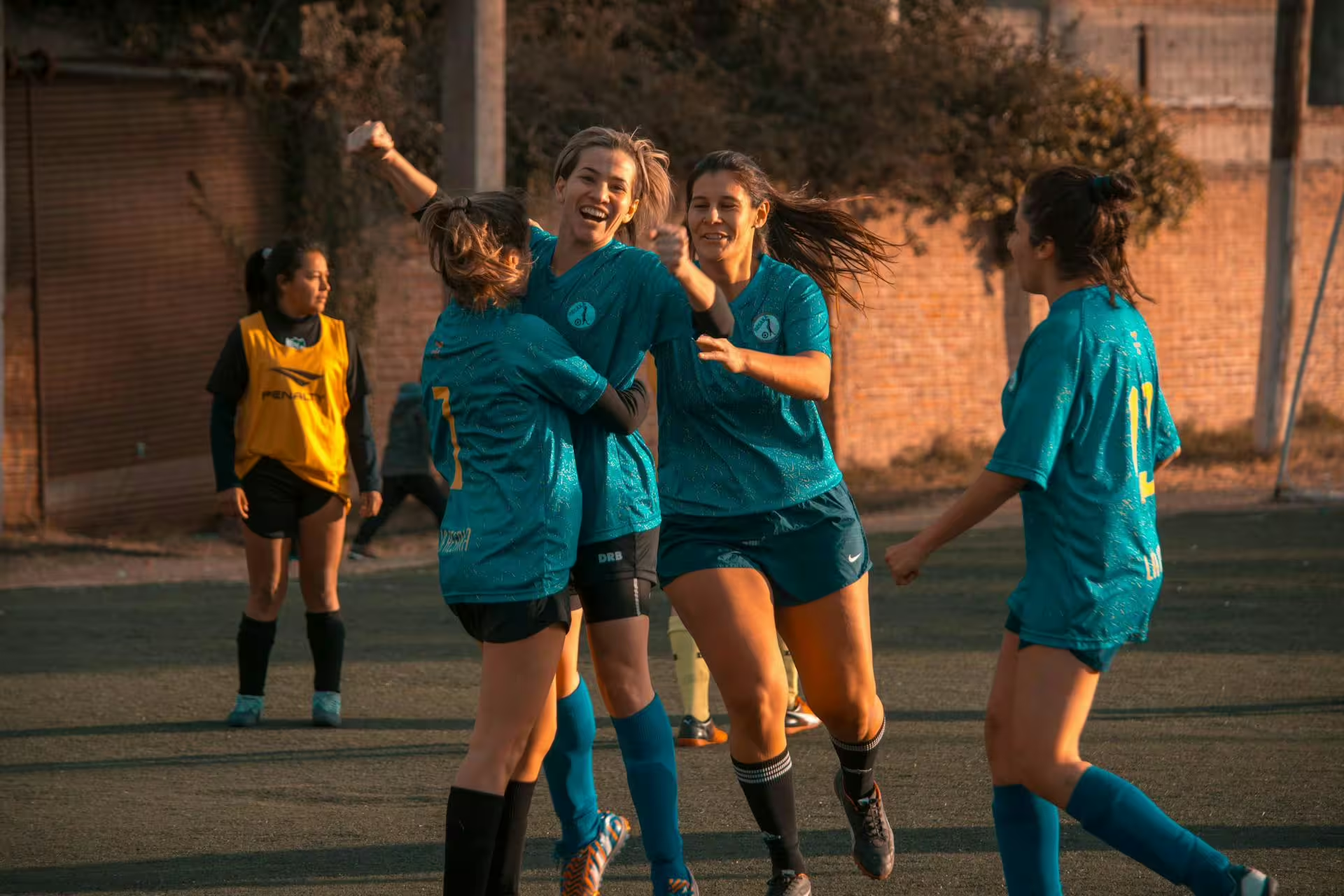Though it has waned in popularity in recent years, baseball remains one of America’s most beloved sport pastimes. There are many reasons for its continued status, but one of them is that it is an especially popular sport for younger children. Peewee baseball promotes teamwork, hand-eye coordination, and physical fitness in kids and enables them to learn the rules and basics from a fairly young age.
Still, whether your child is just starting out in little league or is already a seasoned athlete, having the right baseball gear is essential. Having improperly-fitted or broken down gear can impact a player’s safety during the game and it can also greatly impact how well they perform. That is why it is so imperative that parents choose the correct equipment for their baseball players in training. Doing so not only helps them perform at their best but also ensures they stay comfortable and injury-free during the game.
That said, it’s easy for parents to feel overwhelmed by the sheer variety of equipment options available. Even if your child just plays baseball and no other sports, the sheer volume of available baseball-centric products and brands can be daunting to navigate. The process is only further complicated by the thousands upon thousands of reviews attached to these pieces of equipment. How does one parent find their way around this mess?
Fortunately, we’re here to help! In this article, we will guide you through the process and help you to make informed decisions about all the essential gear your child could need to play baseball. We will break down the most important baseball equipment items and teach you how to choose the right one for your child’s specific requirements. We will also include some hepful tips for ensuring comfort and performance.
Baseball Glove: The Foundation of Every Player’s Gear
Fans of childhood baseball will likely have fond memories of their first baseball glove. They will also probably have a favorite brand, a favorite method of breaking it in, or have one that they want to pass down to their own kid. Th thing is, a baseball glove is perhaps the most essential piece of equipment for any player. Baseball mitts are crucial when a player is fielding, catching, and throwing the ball. This is why it’s so important to select the right glove. One must consider several things, but first and foremost it should be the type of position their child plays. Next should be the size and fit of the glove. Finally, the material of the glove is important too.
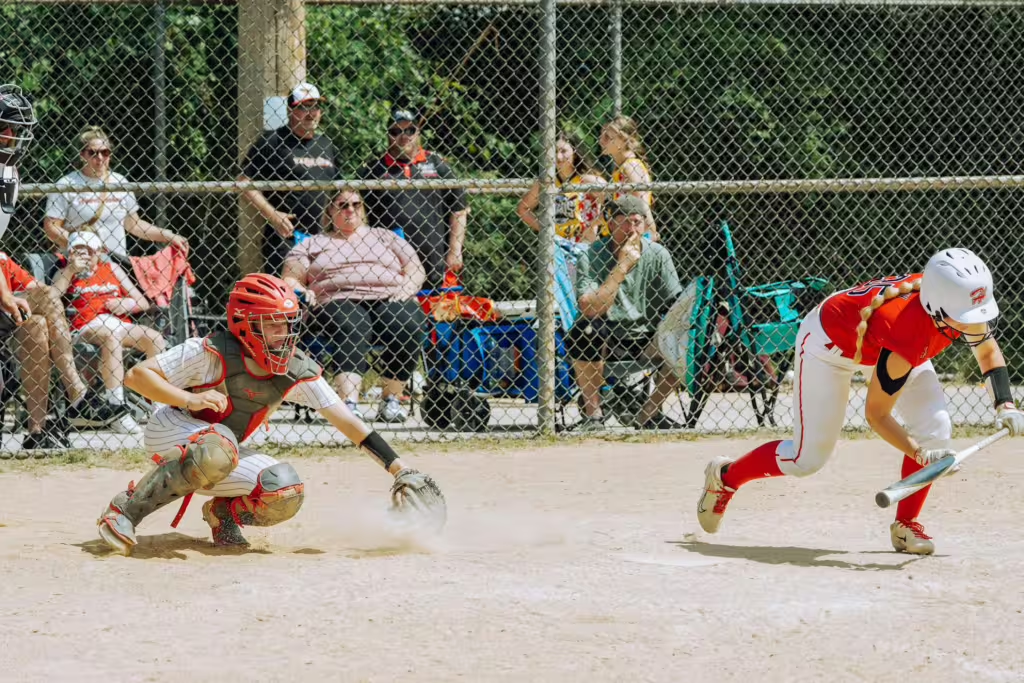
Here’s what you need to know about buying a glove:
Type of Glove Based on Position
The position your child plays will help determine the type of glove they need:
- Infield Gloves: Infielders, including shortstops, second basemen, and third basemen, require gloves that ate smaller and more flexible than the average glove. These types of gloves range from 10 to 11.5 inches, they enable players to make quick throws and rapidly transfer the ball to players in other positions on the bases.
- Outfield Gloves: Outfielders, including center, left, and right fielders, need larger gloves, around 12 to 13 inches, with deeper pockets. These types of gloves tend to have more room and are designed to catch fly balls and high balls more easily.
- Pitcher’s Gloves: Gloves that pitchers use tend to be more specialized. While similar to infield gloves that are around 11 to 11.5 inches, these gloves are slightly different in that they have less obvious markings so that pitchers can avoid giving away their pitches. Most importantly, the glove needs to be comfortable and easy to manipulate, because pitchers need to change their grip depending on the different types of pitches they throw.
- First Base Gloves: You might not even know this if your child is new to the sport, but first base gloves are actually different than other baseball gloves. Sure, they are similar to those of outfielders and tend to be around 12 to 13 inches, but they are often a bit more padded and longer. These types of gloves are specifically designed to help players catch errant throws and scoop balls out of the dirt.
Sizing the Glove
The size of the glove is just as key as the shape and purpose during a dame. A comfortable fit will ensure efficient play. Here’s how to determine the right size for your child:
- Measure Hand Size: In order to choose the right glove, parents should measure the distance from the tip of their child’s middle finger to the base of their palm. This measurement represents a solid estimate of the glove size your child will need.
- Consider Comfort and Fit: A good baseball mitt should fit snugly but comfortably around the child’s hand. A glove that is too tight will be difficult to move and manipulate. At the same time, a glove that fits too loosely will affect performance. Also, if the glove feels too stiff from the start, it may need some time to break in.
Material: Leather vs. Synthetic
- Leather Gloves: Leather gloves are a favorite of old-school baseball players. Known for their durability, comfort, and excellent performance, these gloves require a longer break-in period than synthetic ones. That said, they typically last much longer than synthetic gloves. Leather gloves also tend to be more expensive but are well worth the investment if your child plans to play for multiple seasons.
- Synthetic Gloves: Synthetic gloves are lighter, more affordable, and easier to break in than traditional leather baseball mitts. While these gloves may not last as long, they are a great choice for younger players who might just be learning the basics of the game. If your kid ends up wanting to continue or shift to a more competitive level, it might be worth it to invest in a leather glove.
Other Features
Baseball gloves feature some additional elements that include adjustable wrist straps for a secure fit and padded palms for added comfort. As always, make sure the glove feels comfortable to the child and that it allows for easy movement and catching.
Baseball Bat: Choosing the Right Bat for Your Child’s Needs
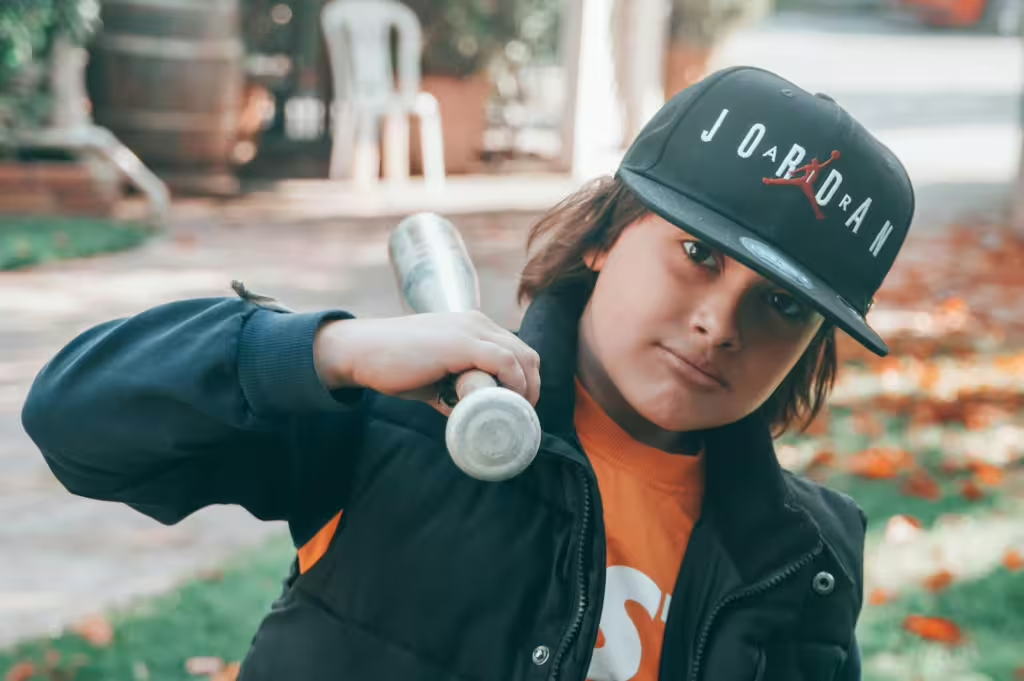
Having the proper baseball bat is just as important for a budding baseball player. Choosing the right bat can have a significant impact on a young player’s performance. When selecting a bat for your child, parents should consider several factors including length, weight, material, and league regulations.
Bat Length and Weight
The length and weight of a bat affect how easily the child can swing and control that bat. We don’t want kids swinging their bat wildly, we want them to have enough control to actually hit the ball. Thus, choosing the correct size bat is crucial to help players hit the ball consistently.
- Length: A bat that’s too long can be difficult for kids to control. Conversely, a bat that’s too short can limit the power a child can put into a swing. The best way to determine the right bat length is to have your child hold the bat by the knob and extend it out in front of them. The bat should come up to their hip or just below it when the child is standing upright.
- Weight: Kids are strong in many ways, but not always physically. A heavy bat will ultimately prove difficult for a child to swing correctly. This is why it’s so important to determine the ideal weight from the get-go. To do this correctly, consider the “drop” of the bat. The drop is the difference between the length of the bat and its weight (measured in ounces). For example, a bat with a drop of -10 is considered a common choice for younger players. This size bat provides a good balance between power and control. Conversely, older players may be more successful with a drop between -3 and -5 for better performance.
Bat Material
- Aluminum/Alloy Bats: The most common type of bats used in youth baseball are made of aluminum or some sort of aluminum alloy. These bats are durable, lightweight, and don’t require as much maintenance as old-school wooden bats. Aluminum bats offer good power and a larger sweet spot, which can be helpful in letting young players hit the ball more effectively.
- Composite Bats: Composite bats tend to be made from carbon fiber, which means they are lighter than aluminum bats. These bats also have a much larger sweet spot and generate more power, for less weight. That said, they are also on the more expensive side of things. Composite bats, like leather baseball mitts, also need a break-in period in order to maximize their performance.
- Wooden Bats: Wooden bats are most often used in professional baseball and in some minor leagues, but they aren’t considered standard for younger players. While these bats are less common in youth leagues, some players may opt for them for training purposes. Wooden bats tend to be heavier and less forgiving than metal bats, making them a better option for older, more experienced players.
League Regulations
Bats are highly-regulated by baseball organizations, so make sure that you check the specific regulations of the league your child will be participating in before making an investment. Some leagues have strict regulations on bat weight, length, and material.
Baseball Helmet: Protecting Your Child’s Head
Safety is paramount in any sport and baseball is no different. The helmet that a child wears when batting is one of their most important pieces of protective equipment. A properly fitted helmet can prevent serious injuries like concussions and facial fractures. There are several factors to consider when picking out a helmet for your young athlete.
Fit and Comfort
A helmet should fit your child’s head snugly, with no gaps between the helmet and their forehead. This means that the helmet should not move around when they shake their head and it especially should not shift when they’re running. Fortunately, most helmets come with adjustable padding or chin straps to help you get the perfect fit for any size melon.
Face Guard/Mask
Many leagues actually require that helmets have a face guard or mask. These types of recommendation or requirements ensure that young players are fully protected from errant pitches. Not that many of these helmets come with removable face masks or cages.
Material
Most of the baseball helmets you’re going to find on the market today are made of durable plastic, typically ABS (Acrylonitrile Butadiene Styrene). This plastic is both lightweight and impact-resistant. As we touched on earlier, some helmets also feature additional padding for comfort and enhanced protection.
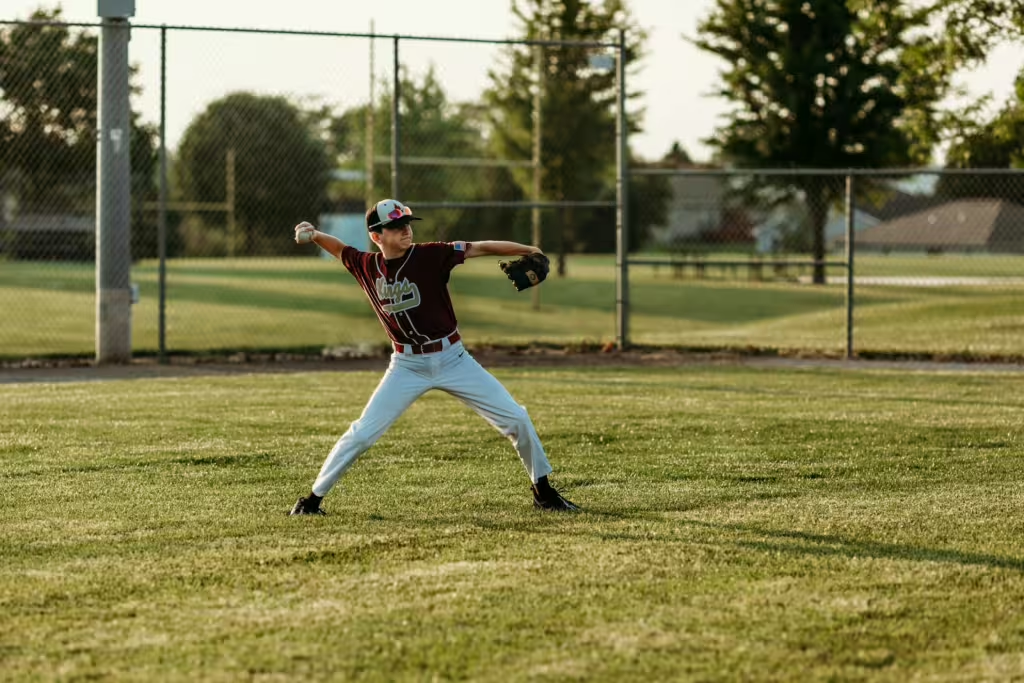
Other Features
Wearing a helmet in the summer heat can get kind of warm, especially for hot-blooded little kids. That is why some helmets come with ventilation holes to keep the child’s head cool during long games. If your kid runs hot, look for helmets with good airflow. Remember, safety is one factor, but comfort is just as important.
Baseball Cleats: Choosing the Right Footwear
Footwear isn’t always a obvious a consideration when suiting a kid up for sports, but having the right pair of cleats can make a significant difference in a child’s comfort and performance on the field. When selecting baseball cleats, parents would do well to consider the following factors:
Fit
As with any shoes, especially those used for physical activity, cleats should fit snugly but not be too tight. A child should be able to wiggle their toes and the heel should stay in place when they run. A good fitting pair of cleats will prevent blisters and ensure maximum comfort during play. Cleats should provide adequate support and cushioning. You might even need to consider cushioned insoles if games start running long.
Type of Cleats
- Rubber Cleats: Rubber cleats are the most common shoe for younger players. These shoes are safe for use on most fields and provide good traction when running on a number of different surfaces. They’re also easier to clean than metal cleats and are often far less weighty.
- Metal Cleats: Metal cleats are mostly used by older players. These shoes are designed for maximum traction on the field but can be more dangerous for younger players.
Cultured Athlete Says…
As you can see, choosing the right baseball gear for a child is not only essential for comfort and safety, but for performance. Gloves, bats, helmets, and cleats are all essential pieces in the baseball puzzle. The right fit and the right hit will make sure your child performs to the best of their ability and enjoys themself while doing so!
Discover more from CulturedAthlete
Subscribe to get the latest posts sent to your email.

